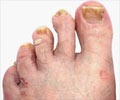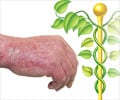- Nail Psoriasis | The Psoriasis and Psoriatic Arthritis Alliance – PAPAA - (http://www.papaa.org/further-information/nail-psoriasis)
- Nail Psoriasis: More Than Cosmetic | National Psoriasis Foundation. - (https://www.psoriasis.org/advance/nail-psoriasis-more-cosmetic)
- Treating specific locations: Hands, feet, nails | National Psoriasis Foundation. - (https://www.psoriasis.org/about-psoriasis/specific-locations/hands-feet-nails)
What is Nail Psoriasis?
Psoriasis is a chronic condition that affects the largest organ of the body – the skin. As a result, skin cells accumulate to form scaly skin that is itchy and dry. This condition cannot be entirely cured. However, adequate and timely treatment can alleviate the symptoms. Half of the population experiencing psoriasis of the body end up contracting nail psoriasis as well.
Nails are actually a part of the skin. Nails grow from the matrix that is the nail root which is situated right under the cuticle. Psoriasis affects the skin and leads to nail psoriasis by bringing about a change in the physical appearance of the nails. It can also cause mild pain or make the nails feel tender or sore. About 10-20% of those who have cutaneous psoriasis (skin) simultaneously develop arthritis too, a condition known as psoriatic arthritis. Eighty percent of people with psoriatic arthritis end up with psoriasis of the nails too.
Most victims of nail psoriasis are embarrassed by this condition and shy away from any work that makes their hands exposed. Their nails lack strength and shine. Psoriasis of the nails can affect people of any age, race or gender. It is still unclear as to why some people have affected nails and why others do not.
What are the Causes of Nail Psoriasis?
The “root” cause of nail psoriasis is in the nail root which is the skin tissue of the nail bed from where the nail grows. Changes in the growth pattern of the cells in the nail root results in the development of the disease.
Family aggregation studies have linked psoriasis of the nails to genetic factors along with interactions with environmental influences.
Another cause for nail psoriasis is fungal infections like onychomycosis that cause thickening of the nails. This nail fungus produces the symptoms shown in psoriasis.
What are the Symptoms and Signs of Nail Psoriasis?
Nail psoriasis symptoms affect both toenails as well as finger nails. They can affect either one nail or all of them depending on the severity of the nail disease. The following clinical complaints are observed by nail psoriasis patients:
- Pitting: The presence of small pits on the surface of the nail or the nail plate, due to partial loss of cells is known as pitting. The number as well as the depth of depressions on each nail varies from individual to individual. They give an appearance like a moon with its craters.
- Nail bed separation/onycholysis: The nail may come off from the skin exposing the nail bed and this process is medically referred to as onycholysis. It begins with a small white or yellow spot (like an oil drop) which spreads and ultimately causes the nail to separate from the rich blood supply bed beneath it. The bare skin can be colonized by bacteria and bring about a painful infection.
- Debris buildup/subungual hyperkeratosis: Debris in the form of chalky residue accumulate under the nail and lead to the nail being raised off from the nail bed. This is quite painful and results in toenail pain especially while wearing closed shoes. It can be even more painful if present along with psoriatic arthritis of the toes.
- Changes in nail appearance: The most prominent change is discoloration especially whitening (leukonchia) of the nail which occurs due to mild psoriatric nail disease. Examples of deformation include beau lines that are characterized by lines or furrows growing side to side as opposed to the normal root to tip pattern. Reddish blotches may form under the nails due to splinter hemorrhage caused by outburst of tiny blood vessels in the nail bed.
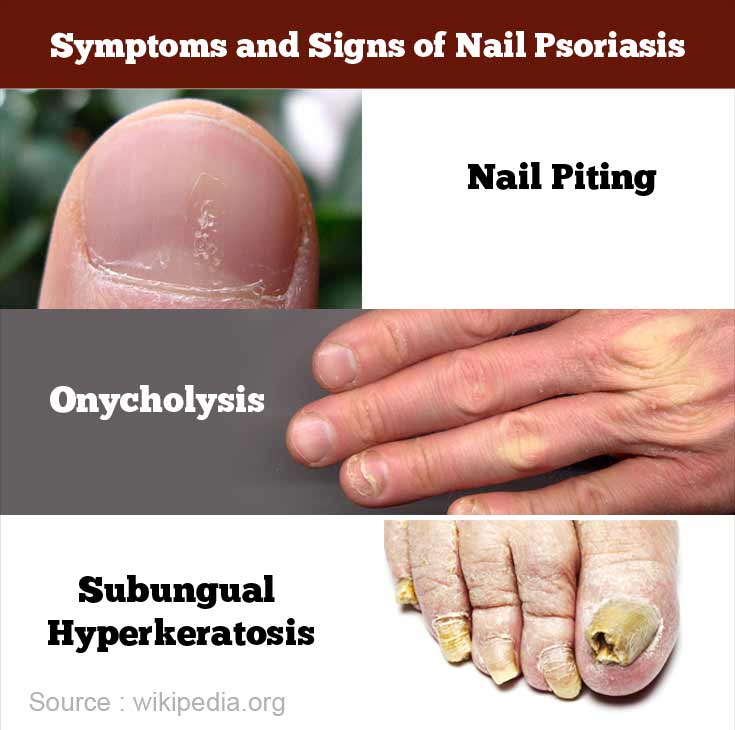
Apart from this, psoriatic inflammation might make nails brittle and weak.
What are the Complications Nail Psoriasis?
Nail health is deeply impacted by nail psoriasis. It is often embarrassing and unsightly to suffer from this condition. It is coupled with either one or more of the following complications:
- Tenderness and pain
- Functional incapacity
- Mental distress
- Secondary bacterial or fungal (caused by toenail fungus or fingernail fungus) infections.
How do you Diagnose Nail Psoriasis?
The diagnosis is made much faster in individuals who suffer from plaque psoriasis (the most common form of the disease characterized by bumpy, red patches).
- Fungal infections can also contribute to the symptoms of psoriatic nails. In order to confirm and differentiate, patients are prescribed oral antifungal remedies. If the symptoms do not recede, the diagnosis of psoriasis is confirmed.
- Another alternative is sending nail clippings for a fungal culture.
- In only the most exceptional cases, where only one nail seems to be affected, the nail matrix is biopsied to eliminate the possibility of a tumor.
How do you Treat Nail Psoriasis?
There is no complete cure for nail psoriasis; one can only use a prolonged treatment regimen in order to keep this fingernail disorder under control. Psoriasis treatment includes the following:
- Topical creams: These are an array of creams or gels that can be directly applied to the nails without any supervision. The ointments contain extracts of Vitamin A, Vitamin D (as it showed promising results for skin psoriasis) and Calcipotriol (effective for onycholysis). The only limitation with this treatment would be that the contents of the cream do not reach the nail matrix as the cuticle forms a thick barrier. Over months of treatment, the barrier thins down.
- Antifungal treatment: Antifungal treatment is prescribed when nail psoriasis worsens due to a fungal infection.
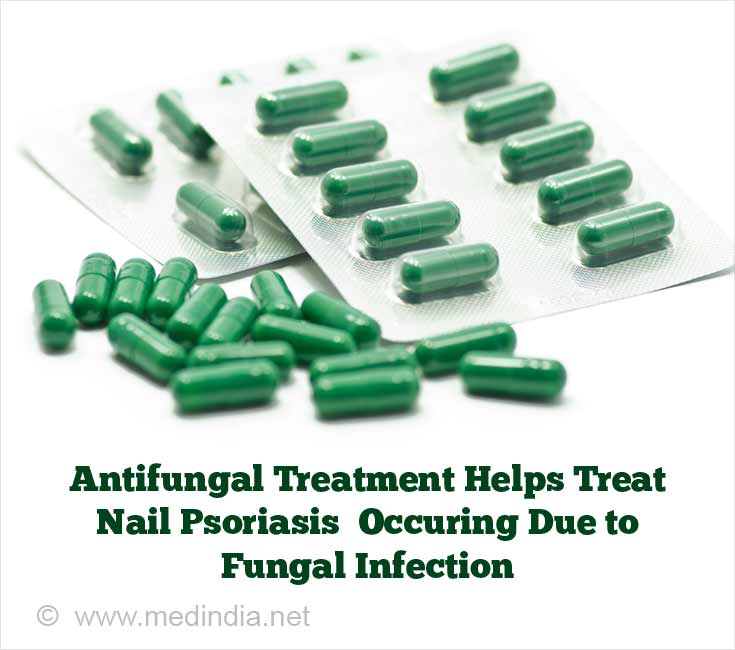
- Cosmetic remedies: Some people work on the appearance of the nails by relying on cosmetic correction treatments. Thick and misshaped nails can be filed down, while discolorations are treated with chemicals. Stickers of fake nail extensions can be used on the affected nails.
- Removal of affected nail: Chemical or surgical removal of the nail is advised only in cases where psoriasis has deformed 70% of the nail.
- Phototherapy: Trained professionals administer adequate amount of ultraviolet or UV light on the affected area to treat psoriasis. It is called PUVA treatment (a combination of a drug called psoralen and ultraviolet A therapy) and is apt when the person simultaneously suffers from skin psoriasis.
- Steroid injections: This is an excruciating treatment option that involves injecting corticosteroids into the nail folds every 2-9 months. An anesthetic or numbing cream is used prior to the procedure.
- Systemic treatment: Systemic treatment plans involve a holistic approach that targets plague psoriasis and not just psoriasis of the nails. Soriatane and Cyclosporine are commonly used drugs in systemic treatment.
Regardless of the type of treatment option, it is important to stay patient. These treatment plans work on the new nail and the process of outgrowing the defected nail takes at least a year for fingernails and twice as much for toe nails.
How do you Prevent Nail Psoriasis?
Psoriasis of the nails affect the dexterity and overall functioning of one’s hands. It is always better to take simple steps to prevent this nail disorder than battle it later.
Prevention tips:
- Keep your nails trimmed short.
- Wear cotton or rubber gloves while performing chores that may result in nail wreckage.
- Apply moisturizers on the nail cuticle to strengthen the root cells and to deplete the chances of nail dystrophy.
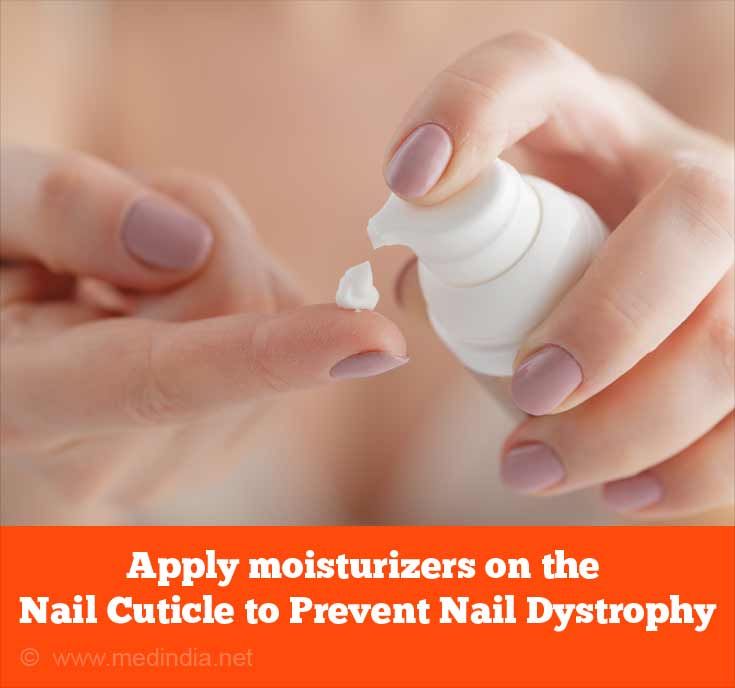
- Soak toenails in a warm water bath for 10 minutes at least once a month. This ensures that no debris build-up under the nails.


